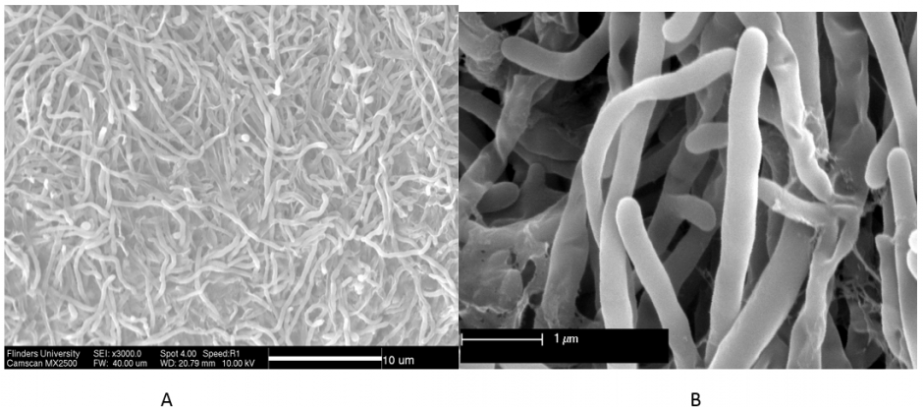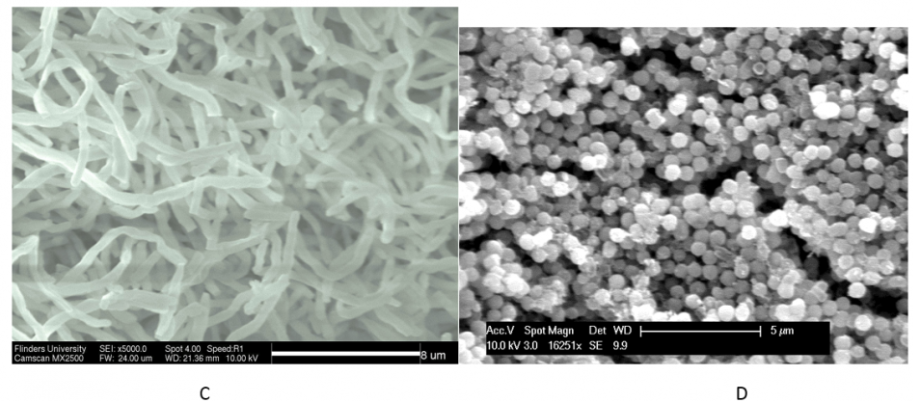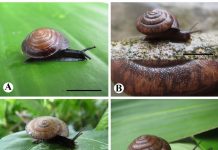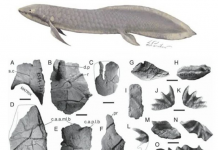Asst. Prof. Onuma Kaewkla, researcher of Faculty of Science, MSU discovered new endophytic actinobacteria and its applications in medicine and agriculture.
Actinobacteria or actinomycetes are gram-positive bacteria. Some genera produce highly tolerant spores that are similar to fungi. Endophytic actinobacteria are actinobacteria that live in plant tissues without causing harm. In contrast, these microorganisms are important in the production of a wide variety of bioactive substances such as antibiotics, anticancer, antidiabetic agents, anti-inflammatory and immune suppressants. Currently, more than 75 per cent of commercial antibiotics are produced from actinobacteria. It is useful in the production of plant growth promoters such as auxin, gibberellins and cytokinins. It also systematic resistant pathogens and stimulate the immune system of plants.
Nowadays, there is an increasing number of resistant and opportunistic pathogens. Methicillin-resistant Staphylococcus aureus (MRSA) is the world’s number one most important drug-resistant pathogen, so it is imperative to find a new antibiotic. Endophytic actinobacteria, isolated from plants, tend to be a rare and new genus of microorganisms with the same potential to produce new antibiotics. Besides, only about 1-10 per cent of bacteria are reported to be discovered and isolated.
Asst. Prof. Onuma Kaewkla conducted her doctoral study on the diversity of endophytic actinobacteria from native Australian trees, native apricot trees, native pine trees, and eucalypts. She has continued the study after completing her PhD with former thesis advisor Prof. Christopher Franco, The Flinders University, Australia. The polyphasic taxonomy method was used to identify the new actinobacterial species. They were classified by using genotype data such as morphology, biochemical and physiological characteristics, and phenotypes data, 16s rRNA gene sequence, guanine and cytosine content, and DNA-DNA hybridization, etc. The study was published in the International Journal of Systematic and Evolutionary Microbiology, and Antonie van Leeuwenhoek. The discovered novel species are as follows:
1. Flindersiella endophytica gen. nov. sp. nov. (2010), named in honour of Flinders University, where the plants used for sorting grew.
2. Nocardia callistridis sp. nov (2010), named after the genus of the isolated plant Callitris preissii.
3. Pseudonocardia adelaidensis sp. nov (2010), named after the city of Adelaide, Australia.
4. Pseudonocardia eucalypti sp. nov (2011), named after the genus of the isolated plant, Eucalyptus microcarpa.
5. Actinopolymorpha pittospori sp. nov. (2011), named after the genus of the isolated plant, Pittosporum angustifolium
6. Promicromonospora endophytica sp. nov. (2012), named endophytica according to its origin, the tissue of endophyte.
7. Kribbella endophytica sp. nov. (2013), named endophytica according to its origin, the tissue of endophyte.
8. Kribbella pittospori sp. nov (2016), named after the genus of the isolated plant, Pittosporum angustifolium.
9. Promicromonospora callitridis sp. nov (2017), named after the genus of the isolated plant, Callitris preissii.
10. Actinomycetospora callitridis sp. nov. (2019), named after the genus of the isolated plant, Callitris preissii.
Asst. Prof. Onuma Kaewkla has applied her experience and expertise in the identification of actinobacteria and its application in the development of antibiotic production and agricultural applications. In addition, she received research funding from the National Research Office (NRCT) and Mahasarakham University on the topic “Streptomyces roietensis sp. nov., an endophytic actinobacterium isolated from the surface-sterilized stem of jasmine rice, Oryza sativa KDML 105” and discovered a new species of actinobacteria as follows:
Streptomyces roietensis sp. nov. (2017), named after Roiet Province ‘Roietensis’, the area where rice samples were collected at Suvarnabhumi Roi Et Province.
Besides, Asst. Prof. Onuma Kaewkla received research funding from The Thailand Research Fund (TRF) and Mahasarakham University on the topic “Micromonospora terminaliae sp. nov., an endophytic actinobacterium isolated from the surface-sterilized stem of the medicinal plant Terminalia mucronata” and discovered a new species of actinobacteria as follows:
Micromonospora terminaliae sp. nov. (2017), named after the genus of the isolated plant, Terminalia mucronate.


All in all, plant tissues are a source of new genera of endophytic actinobacteria that are highly effective in the production of bioactive compounds and new antibiotics. It is useful in the production of plant growth promoters and resistance to plant pathogens. In the future, further research and development of selectable microorganisms will be undertaken for the production of new antibiotics. It aims at increasing yields in jasmine rice, leading to sustainable rice production and developing the country’s agriculture to have the potential to compete with the world community in the future.






